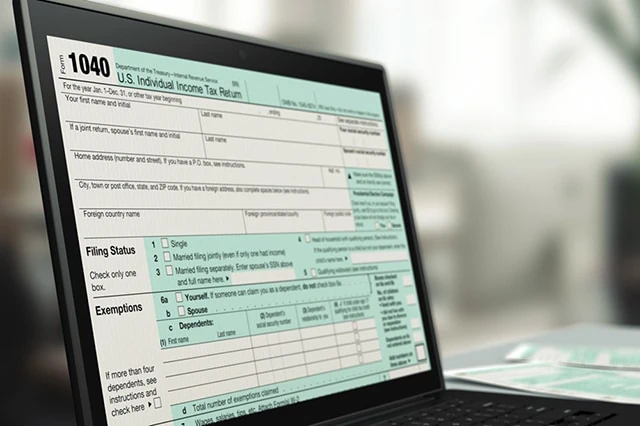Higher education costs have gone through the roof, and many parents are wondering if they’ll be able to send their kids to college. They’re looking for any help as they save for and pay tuition and other college expenses, which is why the American Opportunity tax credit (AOTC) is so important.
The AOTC can trim your tax bill by up to $2,500 per student each year. However, as with everything else in the tax code, the credit comes with a multitude of hurdles, limitations, and other unexpected twists. But if you know how it works, the AOTC can help pay qualified education expenses for an eligible student.
We want your child to get that college degree, so we’re going to run through the basic requirements for the American Opportunity tax credit. When you’re done reading our guidance, you should know whether you can claim the AOTC and, if so, how much you can save on taxes. Hopefully, the financial edge you gain will translate to an educational advantage for your children who are attending college.
Related: 11 Education Tax Credits and Deductions
Featured Financial Products
Who Can Claim the American Opportunity Tax Credit?
You can only claim the AOTC if you pay qualified higher education expenses for an eligible student. Your child is an eligible student if you claim him or her as a dependent on your tax return … but you and your spouse can also be an eligible student for AOTC purposes if you want to further your own education.
YATI Tip: Qualified expenses paid by your dependent, or by a third party for the dependent, are treated as if you paid them.
However, even if you pay qualified expenses for a qualifying student, you still can’t claim the AOTC if any of the following are true:
- You use the married filing separately filing status on your federal tax return.
- You’re claimed as a dependent on someone else’s tax return.
- Your modified adjusted gross income (AGI) is $90,000 or more ($180,000 or more if you use the married filing jointly filing status on your return).
- You or your spouse were a nonresident alien for any part of the tax year and didn’t elect to be treated as a resident alien for tax purposes.
- You don’t have a Social Security number or individual taxpayer identification number (ITIN) by the due date of your federal tax return (including any tax filing extensions).
- Your dependent student doesn’t have a Social Security number, ITIN, or adoption taxpayer identification number (ATIN) by the due date of your tax return (including extensions).
Related: 30 Tax Statistics and Facts That Might Surprise You
What Are Qualified Education Expenses?
For purposes of the AOTC, qualified education expenses include tuition and certain expenses required for enrollment or attendance at an eligible educational institution, such as student activity fees or books, supplies, and equipment (e.g., computers) needed for class.
Eligible educational institutions include any college, university, vocational school, or other post-secondary educational institution eligible to participate in federal student aid programs.
You can also claim the AOTC for qualified education expenses paid in advance for an academic period beginning in the first three months of the following year. For example, if you pay a $2,000 tuition bill in December 2024 for a semester beginning in January 2025, you can use that payment to calculate the AOTC for the 2024 tax year.
YATI Tip: Each student will receive a tuition statement (Form 1098-T) from the educational institution showing how much was paid for tuition and other eligible education expenses. The total of all scholarships or grants administered and processed by the school will be included, too. There’s also a checkbox to indicate that a portion of your payments are for an academic period beginning in the first three months of the following year. Tuition statements for the 2024 tax year should be delivered by Jan. 31, 2025.
What’s not a qualified education expense?
You can’t claim the AOTC for room and board, transportation costs, insurance, medical expenses (e.g., student health fees), living expenses, and similar personal expenses.
Expenses related to classes that involve sports, games, or hobbies also aren’t qualified education expenses for AOTC purposes, unless they’re part of the student’s degree program. The same is true for non-credit courses.
You also can’t use the same educational expenses to claim multiple tax breaks. So, for example, you can’t claim the AOTC for expenses that are:
- Deducted as a business expense on Schedule C
- Used to claim the Lifetime Learning tax credit
- Used to figure the tax-free portion of withdrawals from a 529 plan or Coverdell education savings account (ESA)
- Paid with tax-free educational assistance (e.g., scholarships, grants, or employer-provided assistance)
Who Are Eligible Students?
To be an eligible student for AOTC purposes, the student must be pursuing a degree, certificate, or other recognized education credential. He or she must also be enrolled on at least a half-time basis for at least one academic period starting during the tax year (or the first three months of the following year if the qualified expenses were paid during the tax year).
In addition, the credit is only allowed if the student hasn’t completed the first four years of postsecondary education before the tax year started. The student also can’t have expenses that were used to calculate the AOTC in any four earlier tax years (including any tax years in which the former Hope tax credit was claimed for the student). As a result, while graduate students can qualify for the AOTC under certain circumstances, the credit is usually only available for expenses paid for undergraduate students.
The credit is also unavailable if the student has a felony drug conviction for possessing or distributing a controlled substance.
Related: Are Student Loan Payments Tax Deductible?
How Much Is the American Opportunity Tax Credit?
Depending on your income, the AOTC for each eligible student is equal to the sum of:
- 100% of the first $2,000 of qualified education expenses
- 25% of the next $2,000 of qualified education expenses
As a result, the maximum annual credit amount is $2,500 per student. However, as long as your modified AGI is below a certain amount (more on that in a minute), you can claim the full credit for each student for whom you paid at least $4,000 of qualified education expenses.
Reduction Based on Modified Adjusted Gross Income
The amount of the AOTC is gradually reduced to $0 if your modified AGI is between $80,000 and $90,000 ($160,000 and $180,000 for married couples filing a joint return).
Modified AGI for purposes of the AOTC income limits is equal to your adjusted gross income, plus any:
- Foreign earned income exclusion
- Foreign housing exclusion or deduction
- Exclusion of income for residents of American Samoa or Puerto Rico
Refundability
The AOTC is a partially refundable tax credit. Up to 40% of the credit is refundable (i.e., up to $1,000 per student), which means you can receive a tax refund for the refundable portion even if your pre-credit tax bill is less than the overall credit amount.
However, if you’re under 24 years of age at the end of the tax year, none of the credit is refundable if all the following are true:
- You were either:
- Under age 18 at the end of the tax year
- Age 18 at the end of the tax year and your earned income was less than one-half of your support
- Age 19 to 23 at the end of the tax year, a full-time student, and your earned income was less than one-half of your support
- At least one of your parents was alive at the end of the tax year
- Your tax return filing status is not married filing jointly
Featured Financial Products
Related: How Much Is Your Standard Deduction?
Claiming the American Opportunity Tax Credit
Use Form 8863 to calculate both of the possible education tax credits: the AOTC and the Lifetime Learning credit. Complete and submit a Form 8863 for each student for which you are claiming the AOTC.
The non-refundable portion of the AOTC is reported on Schedule 3 (Form 1040), while the refundable portion (if any) is reported directly on your Form 1040.
If you’re using a commercial tax software product like TurboTax to file your taxes, the program will fill out Form 8863 and the other related information for you. (If you’re looking for the right tax software for you, check out our review of the best tax software products available.)
- TurboTax is the most popular self-guided tax preparation software on the market for individuals and small businesses.
- The software integrates with other powerful Intuit products to get you the maximum refund and guides you through the process.
- Need a helping hand? TurboTax Live allows you to reach out for assistance from a tax professional.
- Can handle the most complex tax situations
- Offers live tax assistance and preparation
- Intuitive interface and Q&A format
- Complex, often confusing pricing system
- Software comes with significant horsepower but a price to match
Fewer Audits Because of the American Opportunity Tax Credit
Starting in 2024, the IRS will be cutting back on the number of correspondence audits focused on the AOTC and certain other refundable credits, such as the earned income tax credit, health insurance premium tax credit, and additional child tax credit. Instead, the IRS will attempt to increase payment accuracy and reduce administrative burdens by focusing on helping taxpayers submit accurate filings upfront.
Related: States That Tax Social Security Benefits
American Opportunity Tax Credit vs. Lifetime Learning Credit
As noted above, you can’t use the same education expenses to claim both the AOTC and the Lifetime Learning credit. As a result, you must pick which credit to claim if you paid certain higher education expenses.
There’s generally more flexibility with the Lifetime Learning credit. For instance, the Lifetime Learning credit can be used at any time regardless of whether the student has already completed four years of college or claimed any education credits for more than four previous tax years. The student doesn’t need to be enrolled on at least a half-time basis or pursuing a program leading to a degree or other credential. So, you can also claim the credit for just one course or simply to improve job skills.
On the other hand, the Lifetime Learning credit is generally less valuable. The maximum credit is only $2,000 per return, regardless of how many students are eligible for the credit. The entire credit is also non-refundable. Like the AOTC, it’s also phased-out if your modified AGI is between $80,000 and $90,000 ($160,000 and $180,000 for married couples filing a joint return).
YATI Tip: The income limits for the Lifetime Learning credit were increased in 2021 to help taxpayers transition away from the former tuition and fees deduction, which was repealed starting in 2021, to the tax credit.
In the end, when comparing the two education tax credits, using a student’s qualified expenses for the AOTC will always generate a larger tax credit than if those same expenses are used to claim the Lifetime Learning credit. However, since the Lifetime Learning credit covers more educational expenses, in some cases you will only be able to claim that credit.
Featured Financial Products
Related:













